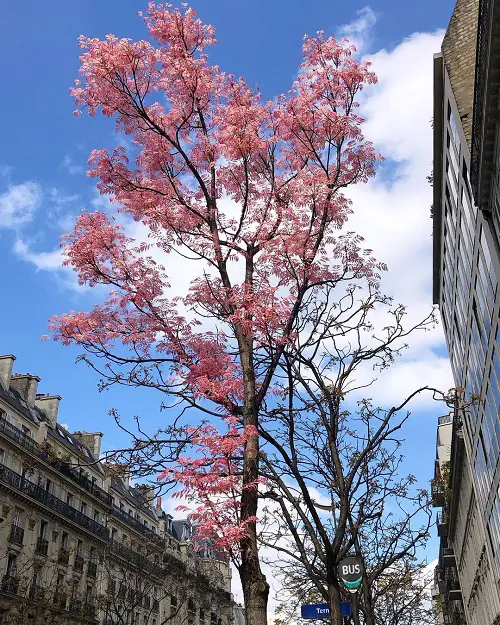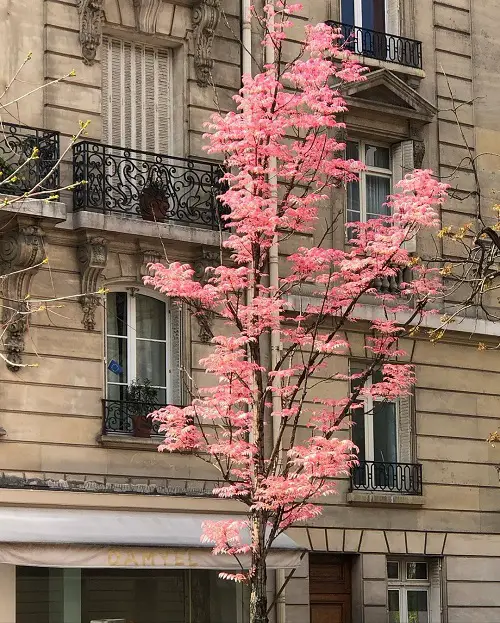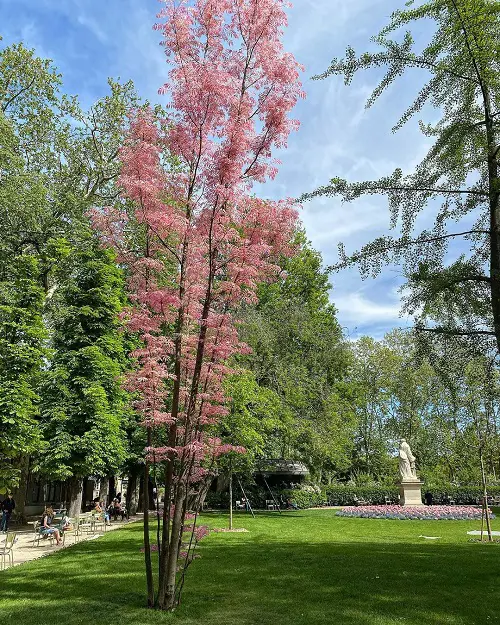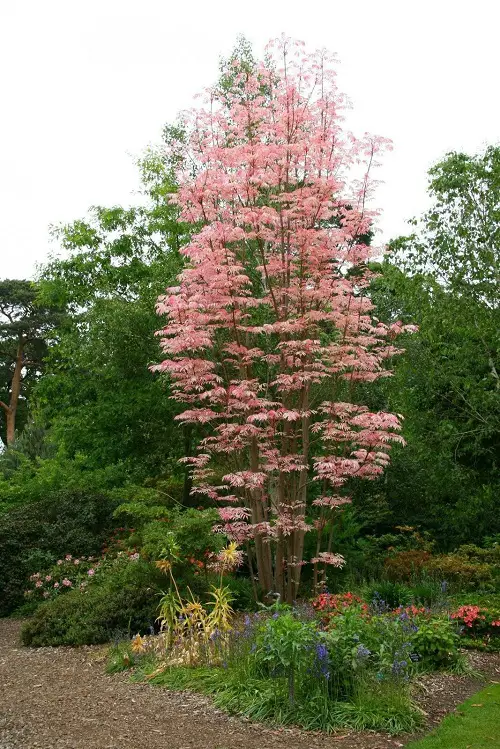Looking for a tree that stands out with its colorful foliage? The Toona Sinensis ‘Flamingo’ might be an excellent choice for you!

Striking pink and cream-color leaves that can add a splash of color to the garden. If this sounds tempting, then keep on reading about Toona Sinensis ‘Flamingo’ Tree!
Check out the best dwarf fruit trees under 6 feet
Toona Sinensis ‘Flamingo’ Tree Information
Toona Sinensis ‘Flamingo’ is a beautiful tree species native to China and other parts of East Asia. They are popular as Chinese Mahogany or Chinese toons and are a member of the mahogany family.
The Toona Sinensis ‘Flamingo’ tree is a deciduous tree that typically grows to a height of 40-50 feet and a spread of 20-30 feet. Its leaves are pinnate with 10-30 leaflets that are lance-shaped and measure 2-4 inches in length. They emerge as pinkish-red in the spring, gradually turning to a variegated pink and cream color throughout the summer. In the fall, the leaves turn a bright golden-yellow color before dropping off for the winter.
The tree produces small, inconspicuous flowers in the spring that are followed by small, brown fruit pods that contain seeds.
Botanical Name: Cedrela sinensis syn.
USDA Zones: 5-9
Propagating Toona Sinensis ‘Flamingo’
Take cuttings from the new growth in the spring or early summer. Cut a 6-inch-long stem with at least two sets of leaves. Remove the leaves from the bottom half of the cutting. Fill a pot with a well-draining soil mix and make a hole in the center. Insert the cutting into the hole and firm the soil around it. Water the cutting and cover the pot with a plastic bag to create a greenhouse-like environment. Place the pot in a warm and bright location, but avoid direct sunlight.
After a few weeks, the cutting will root and start to grow.
Requirements for Growing Toona Sinensis ‘Flamingo’ Trees

Sunlight
Toona sinensis ‘Flamingo’ prefers full sun to partial shade. It can tolerate a little bit of shade, but it might make the foliage colors appear less vivid. Ideally, it should receive at least 4-6 hours of direct sunlight per day for optimal growth and foliage coloring.
In areas with hot summers, providing partial shade during the hottest part of the day can help prevent leaf scorching. It is important to note that the tree’s light requirements may vary depending on the climate and location where it is being grown.
Soil
To ensure that these trees thrive, plant them in well-draining soil. It prefers a slightly acidic to neutral pH level and can tolerate a wide range of soil types, including clay, loam, and sandy soil. Also, add compost or well-rotted manure before planting.
Watering
The frequency of watering Toona sinensis ‘Flamingo’ depends on the season, weather, and soil type. In general, it is recommended to water the plant once a week during the growing season, or whenever the topsoil feels a little dry to the touch.
However, during hot and dry conditions, the plant may require watering twice a week. During the winter months, watering should be reduced to once every two weeks.
Temperature
Toona sinensis ‘Flamingo’ is hardy in USDA zones 6 to 9. This means that it can tolerate temperatures as low as -10°F to 20°F (-23°C to -6°C). However, it is important to note that this tree prefers moderate temperatures and can be damaged by extreme cold or heat.
During the summer, ‘Flamingo’ can tolerate temperatures up to 90°F (32°C). However, it is important to ensure that the tree is well-watered during hot weather to prevent the leaves from drying out and turning brown.
Discover Bushes and Shrubs with Small White, Fragrant Flowers
Toona Sinensis ‘Flamingo’ Tree Care

Fertilizing
To encourage wholesome growth and foliage, apply a balanced liquid fertilizer in the early spring. You can also dilute the feed to 1/2 of its strength and use it every month when the tree is actively growing.
Avoid fertilizing the tree during the fall or winter months.
Pruning
Regular pruning is needed to maintain the shape and size of the plant. Prune the tree in the late winter or early spring before new growth appears. Remove any dead or diseased branches, and thin out any overcrowded branches to improve air circulation.
Pests and Diseases
Toona sinensis ‘flamingo’ trees are generally resistant to pests and diseases. However, they can be susceptible to scale insects, aphids, and spider mites. Use insecticidal soap or neem oil to control these pests.
To prevent diseases, avoid overhead watering and make sure the tree has good air circulation.




Good morning. Do you sell Ylang Ylang trees? How much do they cost? Do you ship to Jamaica? Thanks